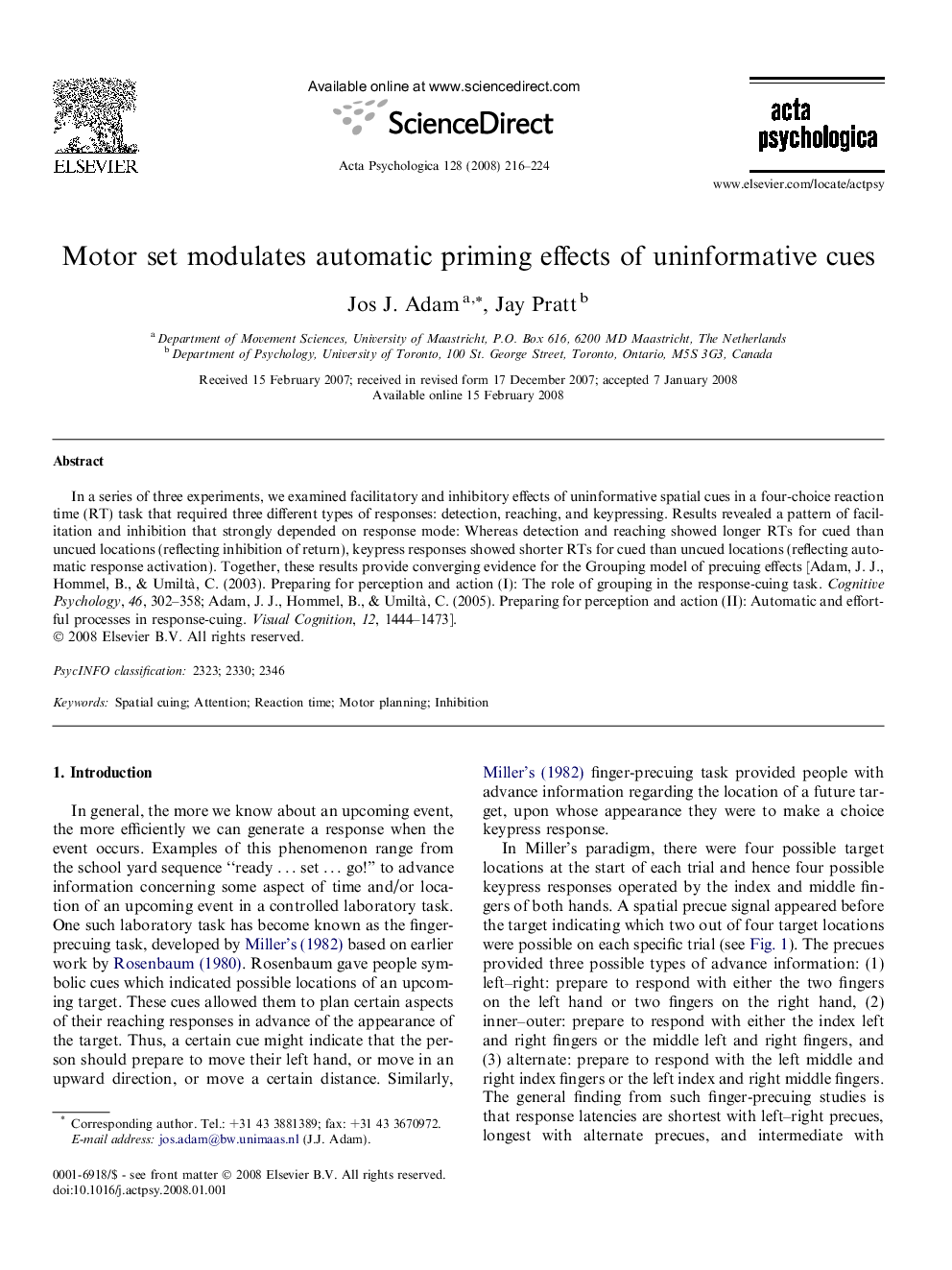| Article ID | Journal | Published Year | Pages | File Type |
|---|---|---|---|---|
| 920455 | Acta Psychologica | 2008 | 9 Pages |
In a series of three experiments, we examined facilitatory and inhibitory effects of uninformative spatial cues in a four-choice reaction time (RT) task that required three different types of responses: detection, reaching, and keypressing. Results revealed a pattern of facilitation and inhibition that strongly depended on response mode: Whereas detection and reaching showed longer RTs for cued than uncued locations (reflecting inhibition of return), keypress responses showed shorter RTs for cued than uncued locations (reflecting automatic response activation). Together, these results provide converging evidence for the Grouping model of precuing effects [Adam, J. J., Hommel, B., & Umiltà, C. (2003). Preparing for perception and action (I): The role of grouping in the response-cuing task. Cognitive Psychology, 46, 302–358; Adam, J. J., Hommel, B., & Umiltà, C. (2005). Preparing for perception and action (II): Automatic and effortful processes in response-cuing. Visual Cognition, 12, 1444–1473].
